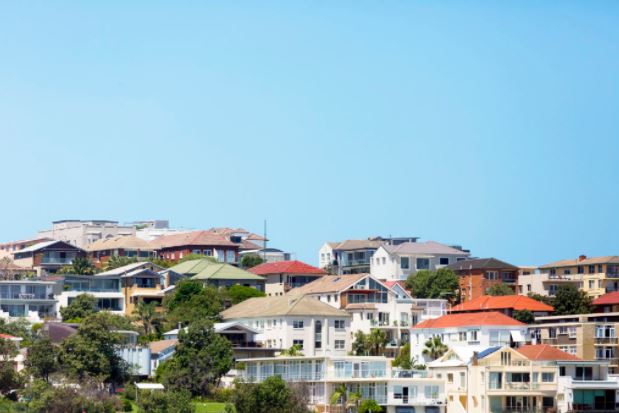Affordability constraints are starting to bite for home-buying hopefuls, with the level of buyer demand easing compared to a few months ago, new research shows.
Although the latest lockdowns prompted some potential buyers to put their plans on hold, others had already been scaling back their property searches as prices spiralled out of reach.
Interest is still stronger at this point in late winter than it usually is at this time of year across most capital cities except Sydney and Hobart, and in regional Australia, as potential buyers who missed out in recent months continue their search.
But the white-hot competition seen in March, when crowds of bidders were paying huge sums at auction, has started to come back.
The Domain Buyer Demand Indicator (BDI) measures search behaviour on domain.com.au to identify active buyers who are more likely to purchase, such as those who shortlist a home or send an inquiry. It tracks changes in demand over time.
Demand peaked in March for Sydney, Melbourne and Brisbane, and in July for Canberra, the indicator found.
“Buyer demand across all cities has come off its peak,” Domain chief of research and economics Nicola Powell said.
“Demand is easing overall and that is going to be the impact of affordability, and the fact we have seen price rises across all of our capital cities.”
House prices have soared in the wake of interest rate cuts, government stimuli and a widespread shift to working from home that has prompted owners to upgrade into more spacious residences. Sydney house prices jumped 24 per cent in the year to June, on Domain data, with Melbourne up 16.2 per cent and all cities up by double digits.
“Affordability [is an issue] for all buyers, not just first-home buyers but all buyers, because we’ve seen such significant jumps over the year to date,” Dr Powell said.
The research also tracked the state of the late-winter market, comparing buyer demand over a 30-day period to August 15, to average demand at this time of year.
Melbourne buyer demand is now 10 per cent higher than average at this time of year amid pent-up demand from those who have not yet been able to find their dream home, with Canberra a stunning 60 per cent higher, Brisbane up 7 per cent and Perth up 30 per cent, while regional Australia is 26 per cent higher.
Sydney is 4 per cent lower as the city goes through an extended lockdown, with the real estate industry still open for private inspections.

The lockdowns also cause some buyers to pause their plans until they can get more clarity about when restrictions will lift, Dr Powell said.
“What we do see during lockdown is hesitation creeps in between buyers and sellers – we see a pullback in activity,” she said. “Clarity is really important for buyers and sellers to make decisions.”
Online auctions were still offering good outcomes for those keen to press ahead, allowing buyers to secure a home when there was less competition or sellers to ink a deal quickly, she added.
Once cities reopen, Dr Powell said, we could expect a rebound in activity due to pent-up demand and supply, but she doubted the price jump would be a strong as it was earlier this year given affordability had already become a hurdle.
The affordability challenge is clear in some of the most sought-after neighbourhoods.
Buyer demand in Sydney’s eastern suburbs and northern beaches is down 14 per cent compared to the average for this time of year, as buyers reckon with eye-watering price growth that has sent prices in those pockets up 26.4 per cent and 38.7 per cent in a year, respectively.
“We’ve seen some extraordinary rates of growth in our premium areas,” Dr Powell said. “That becomes a hurdle – it’s a financial impact.”
The more affordable Central Coast, by contrast, recorded a 22 per cent jump in buyer demand as remote workers cast their eyes further afield.
In Melbourne, where prices have not boomed as much in the current cycle as Sydney, prestige neighbourhoods are still in hot demand.
Buyer demand is up 20 per cent in the inner south, 13 per cent in the inner suburbs and 10 per cent in the inner east this winter.
As for Canberra, where overall demand is up 60 per cent compared to the average for this time of year, Dr Powell highlighted the resilient jobs market, high average wage, more affordable housing than Sydney, and little impact from the pandemic until the current lockdown.
She warned the lockdowns in the ACT and Victoria could start to impact buyer demand, as is happening in Sydney.
Article Source: www.domain.com.au
from Queensland Property Investor https://ift.tt/3sYsGN6
via IFTTT